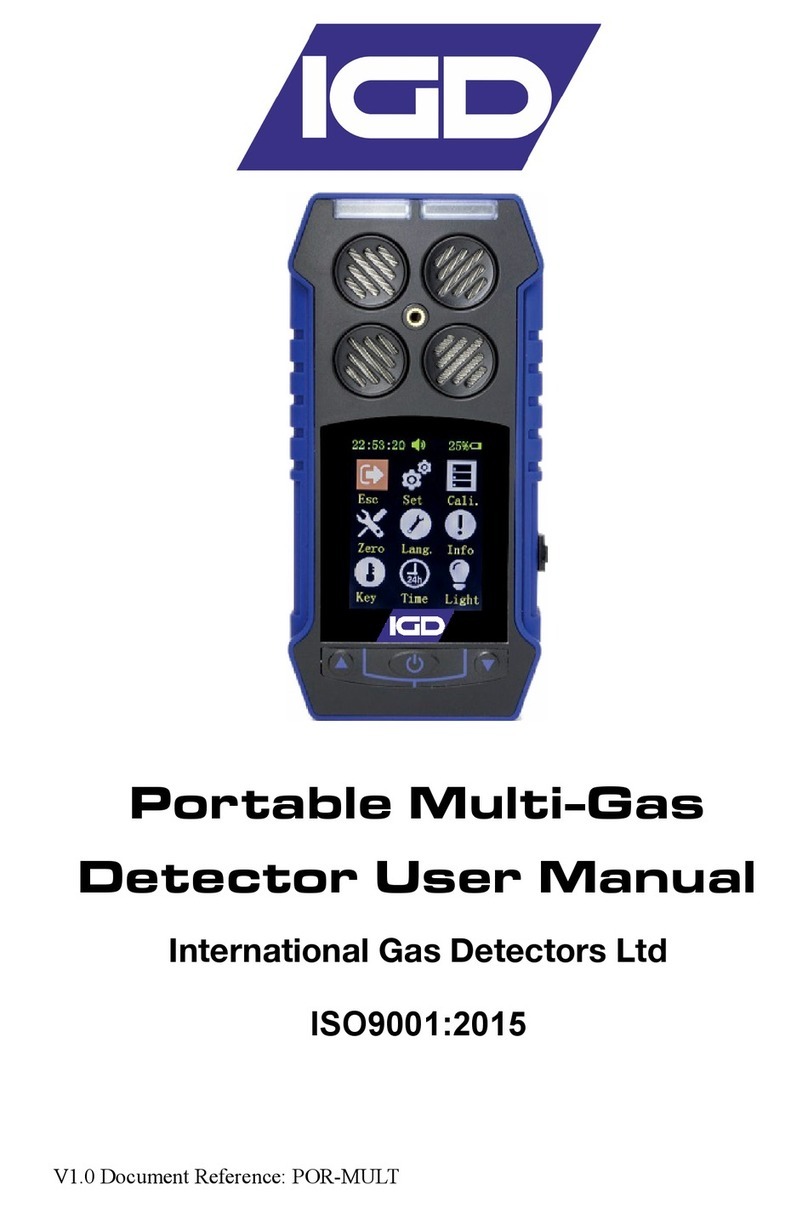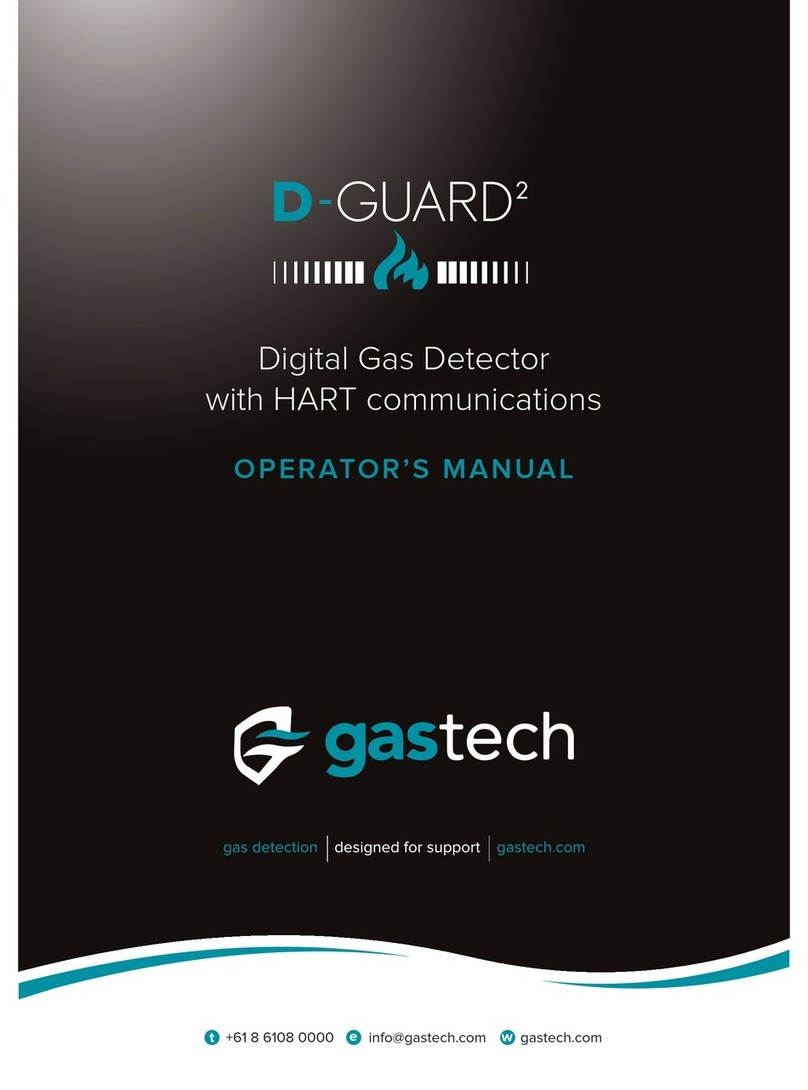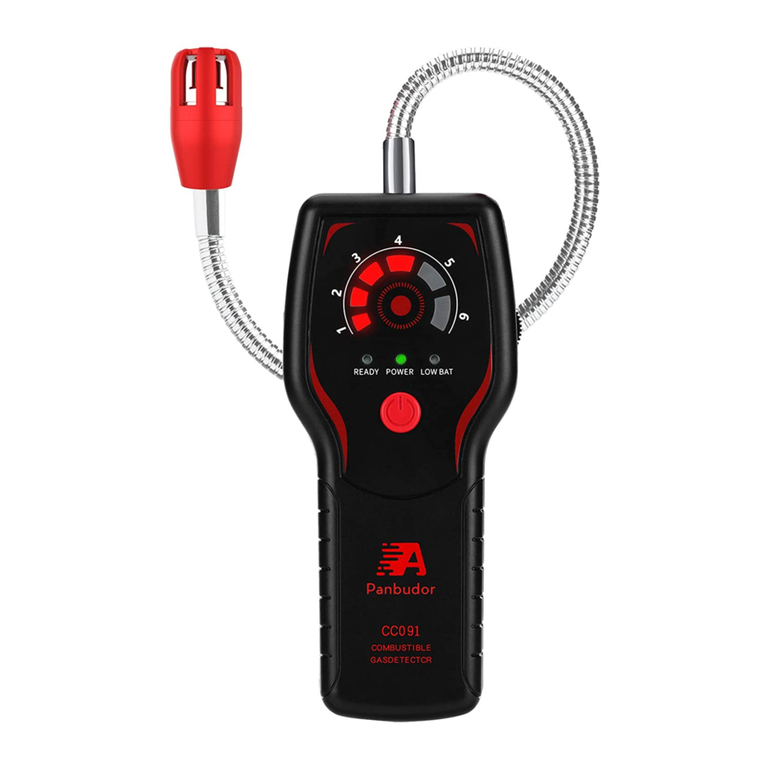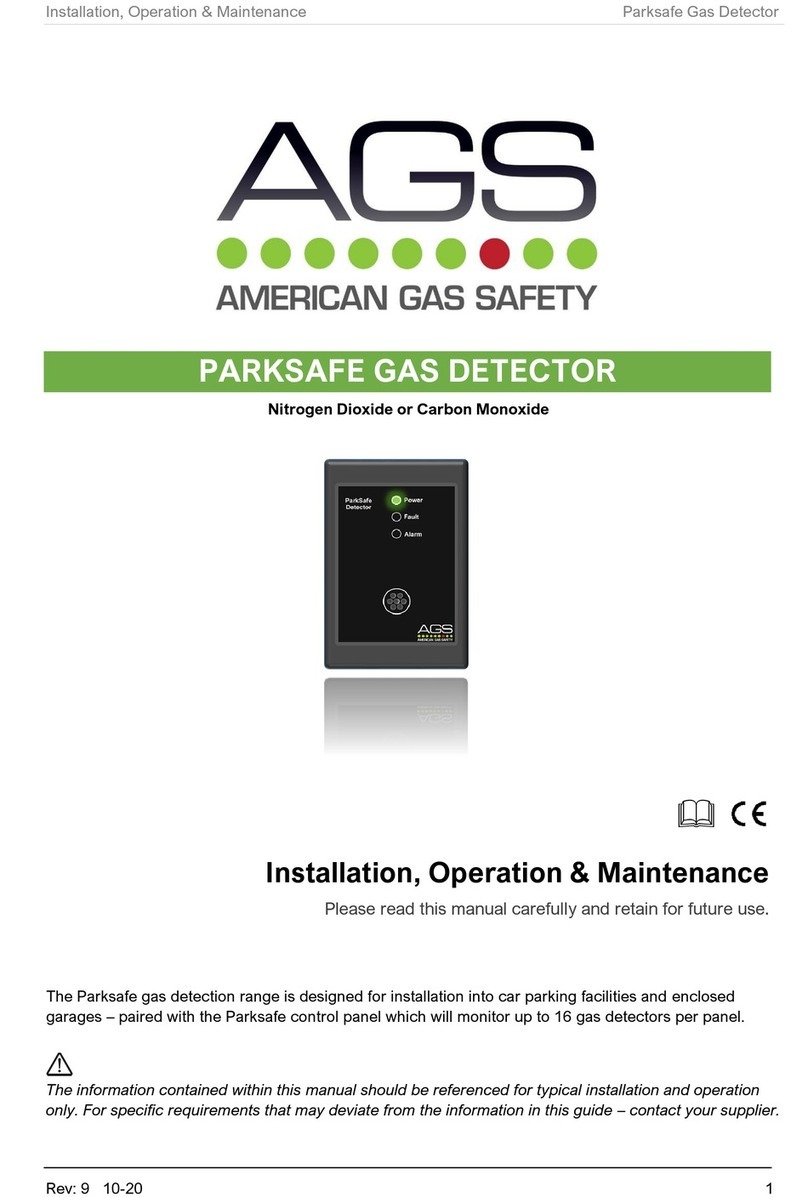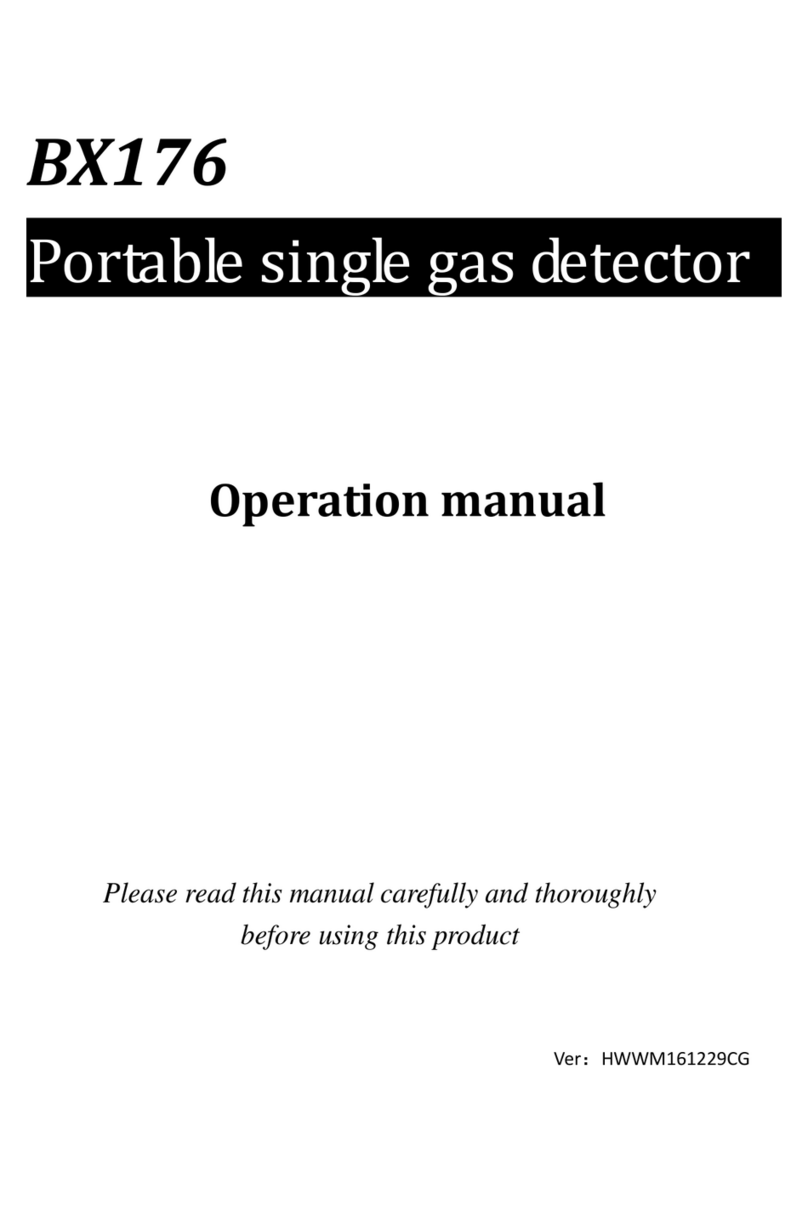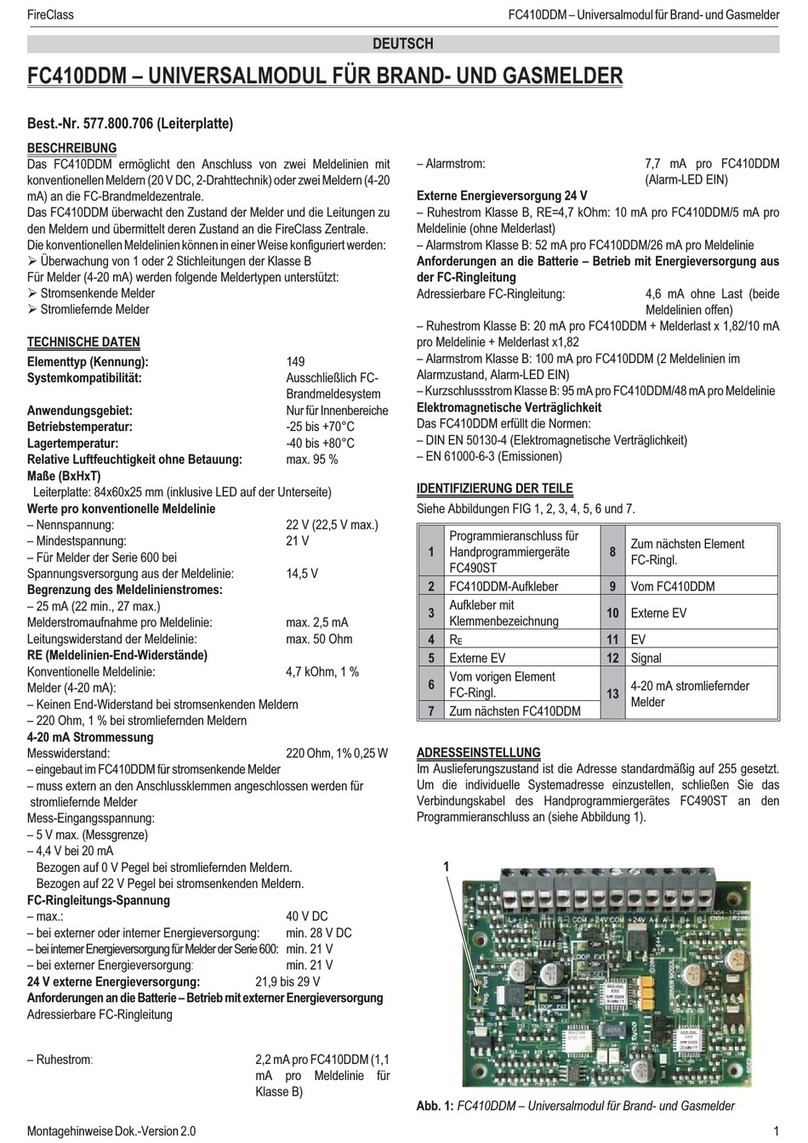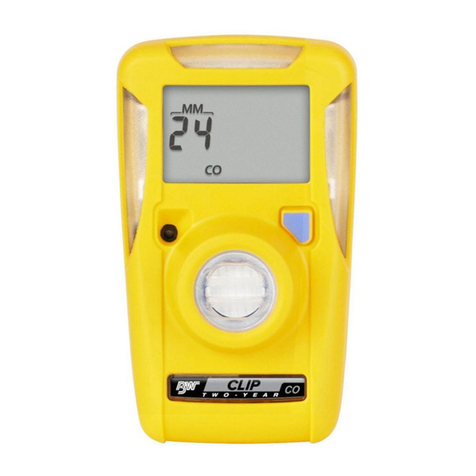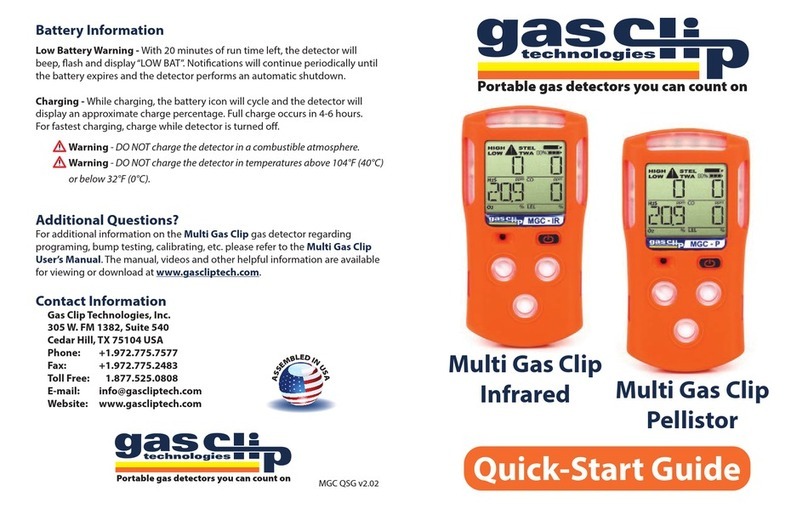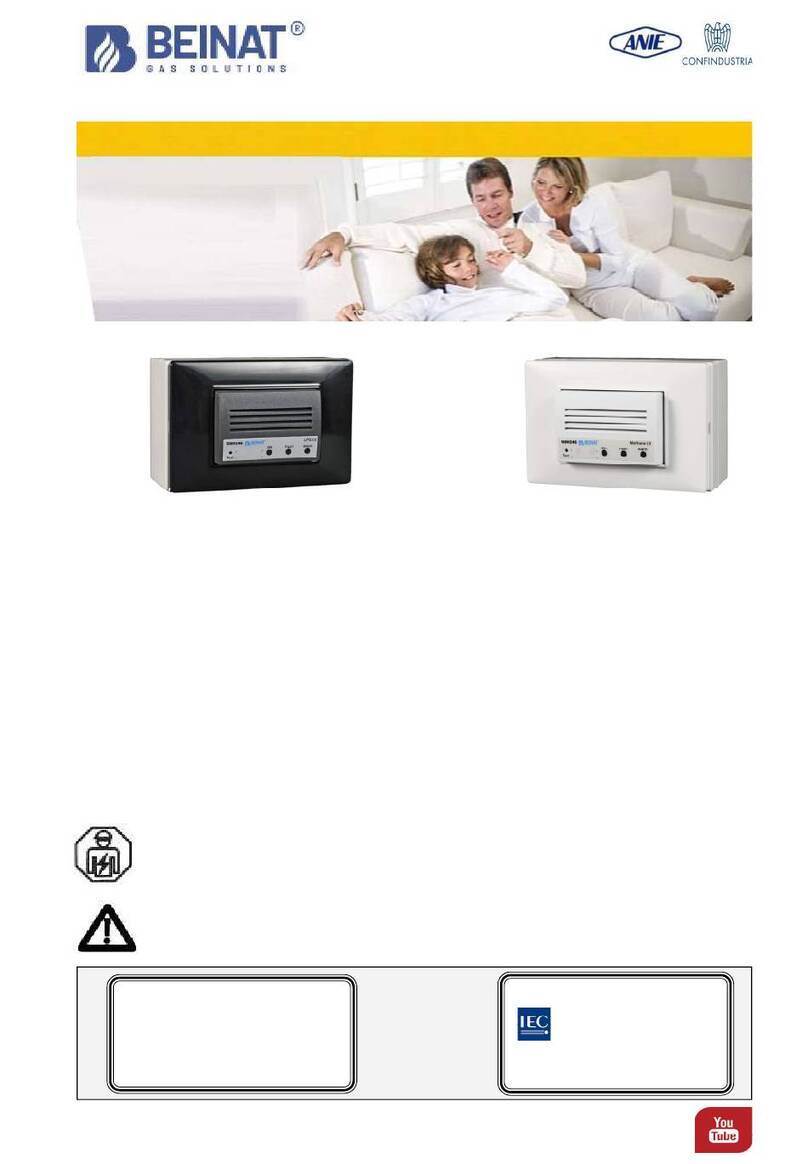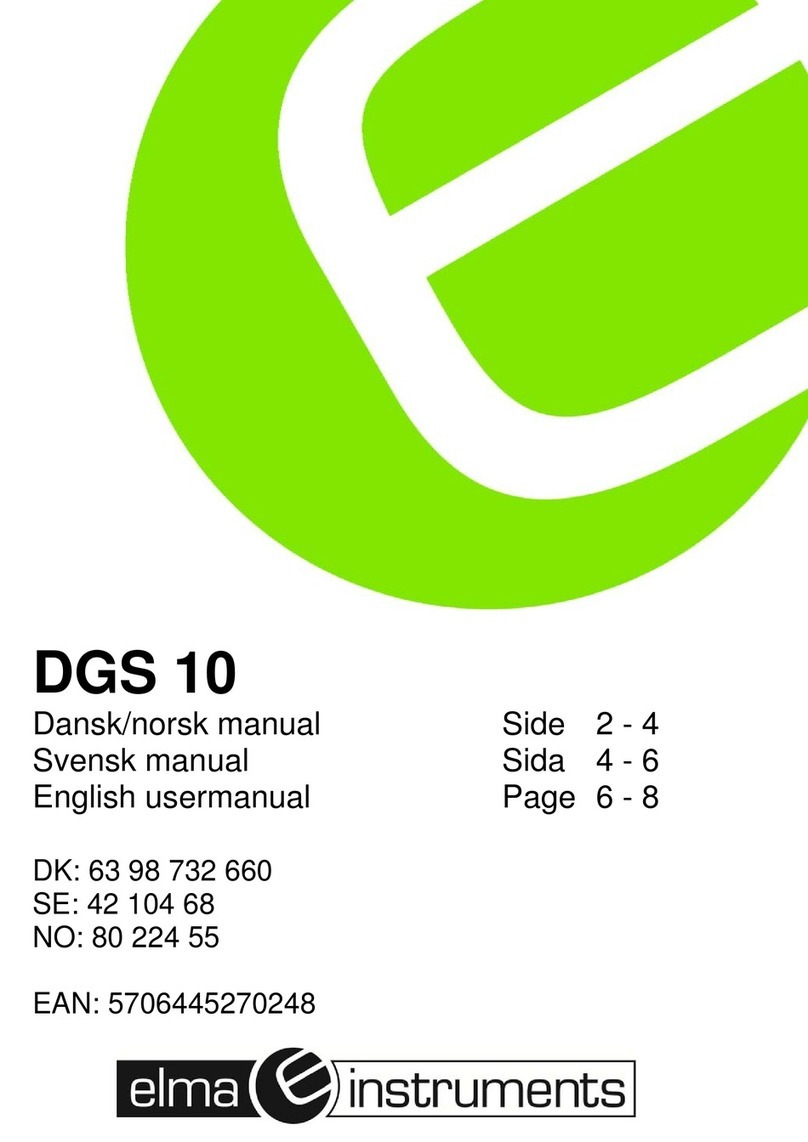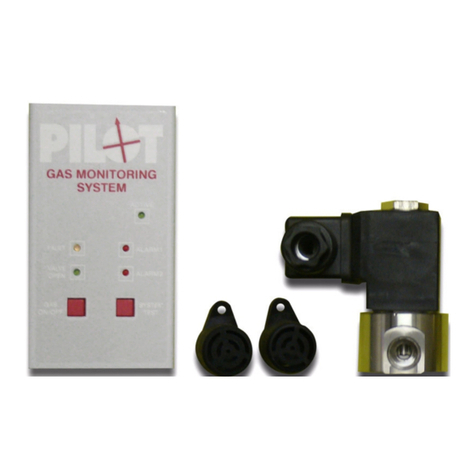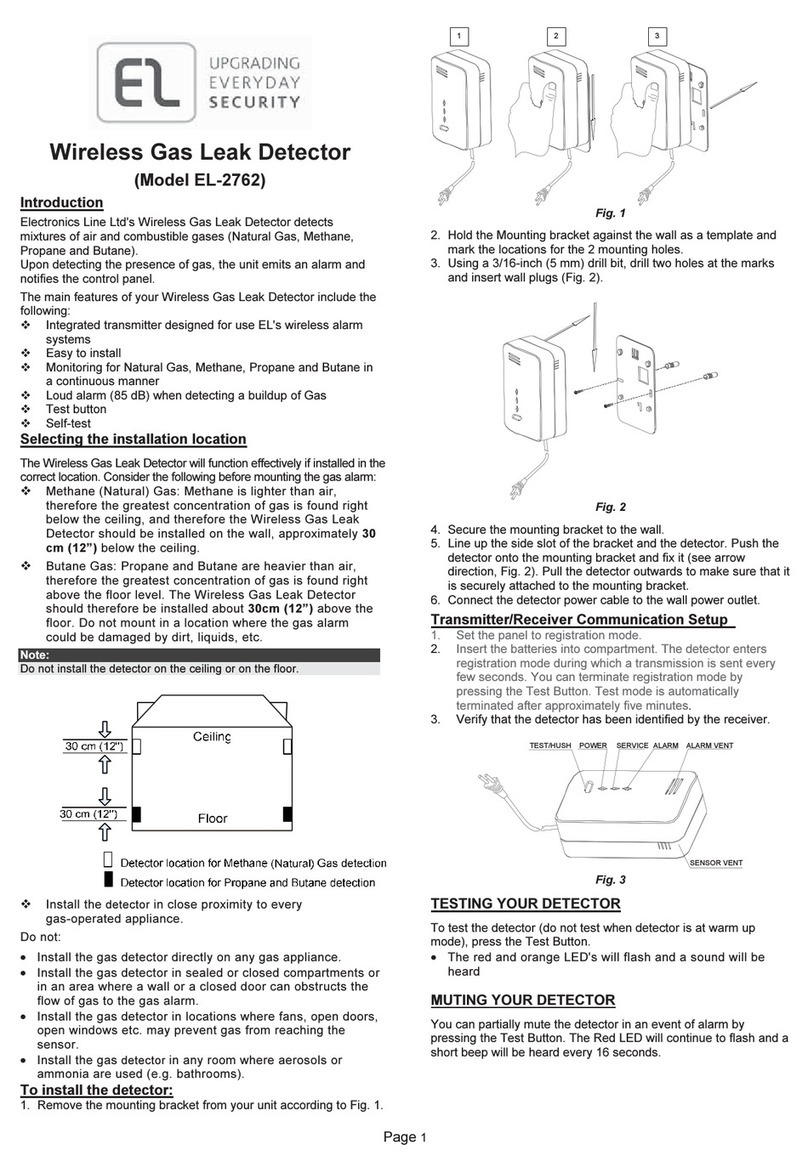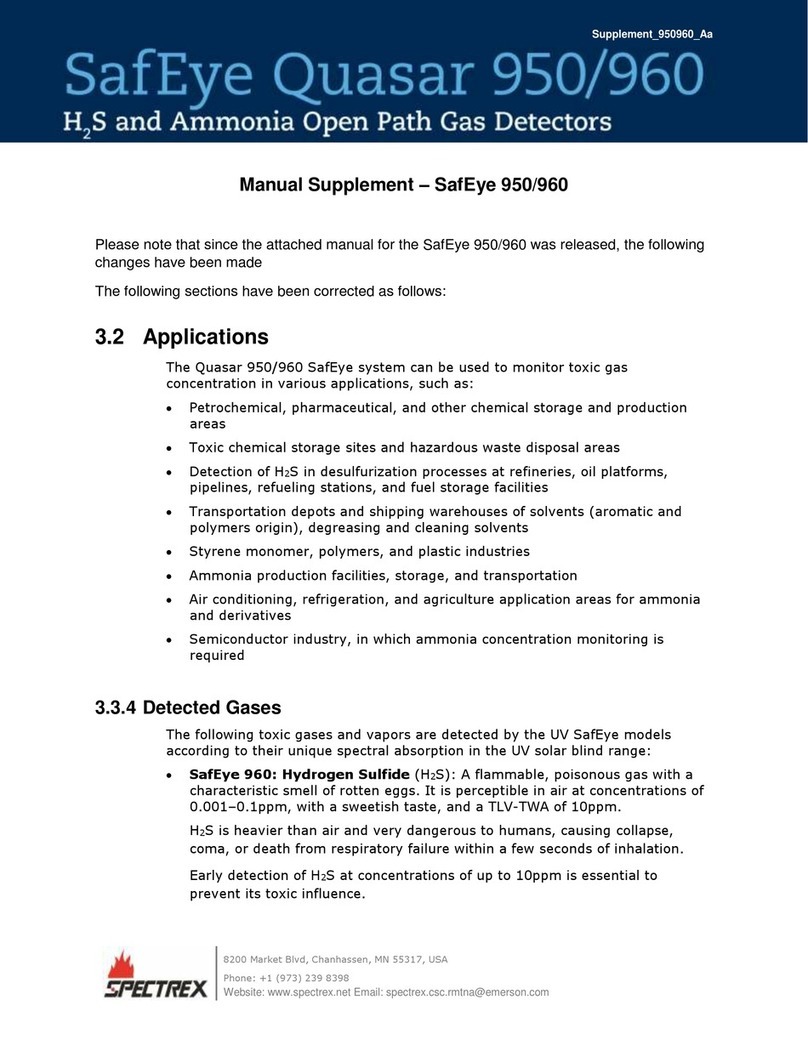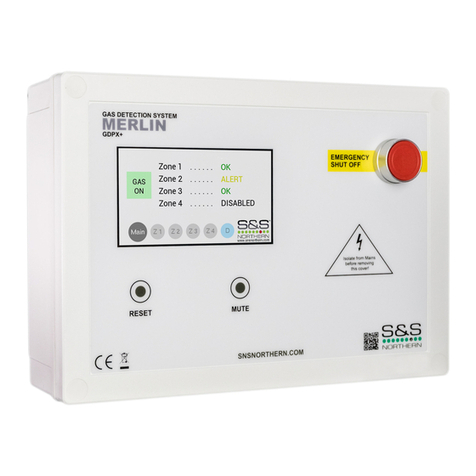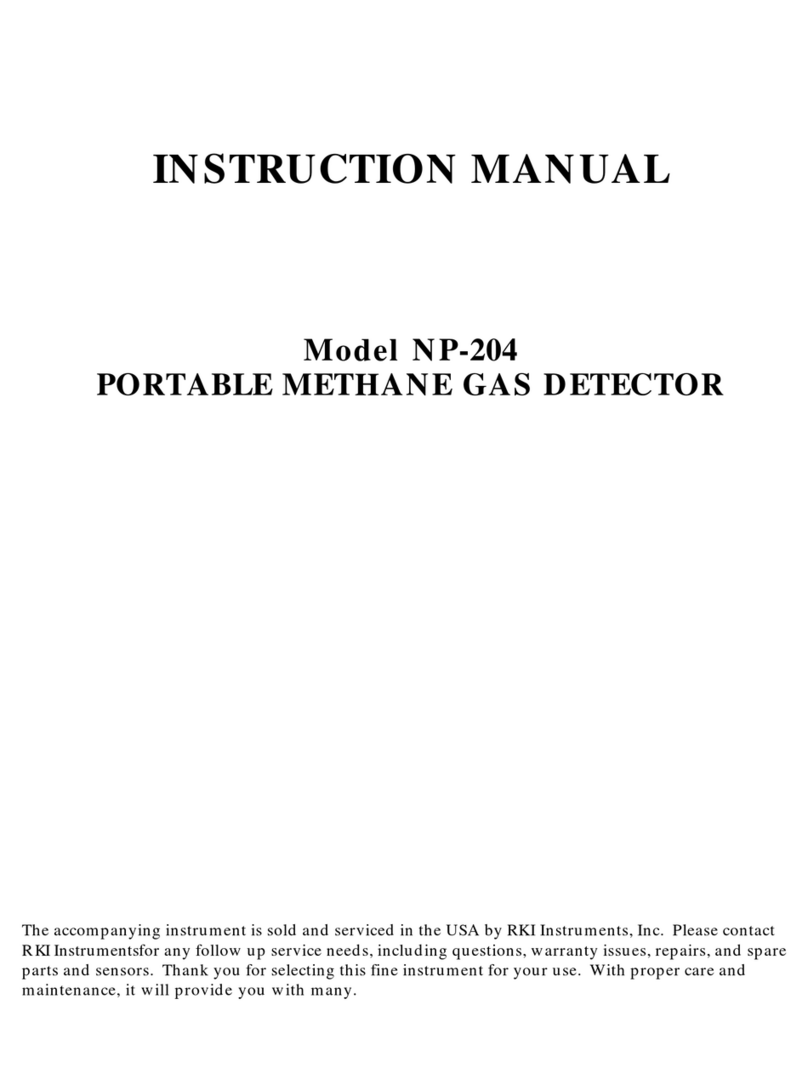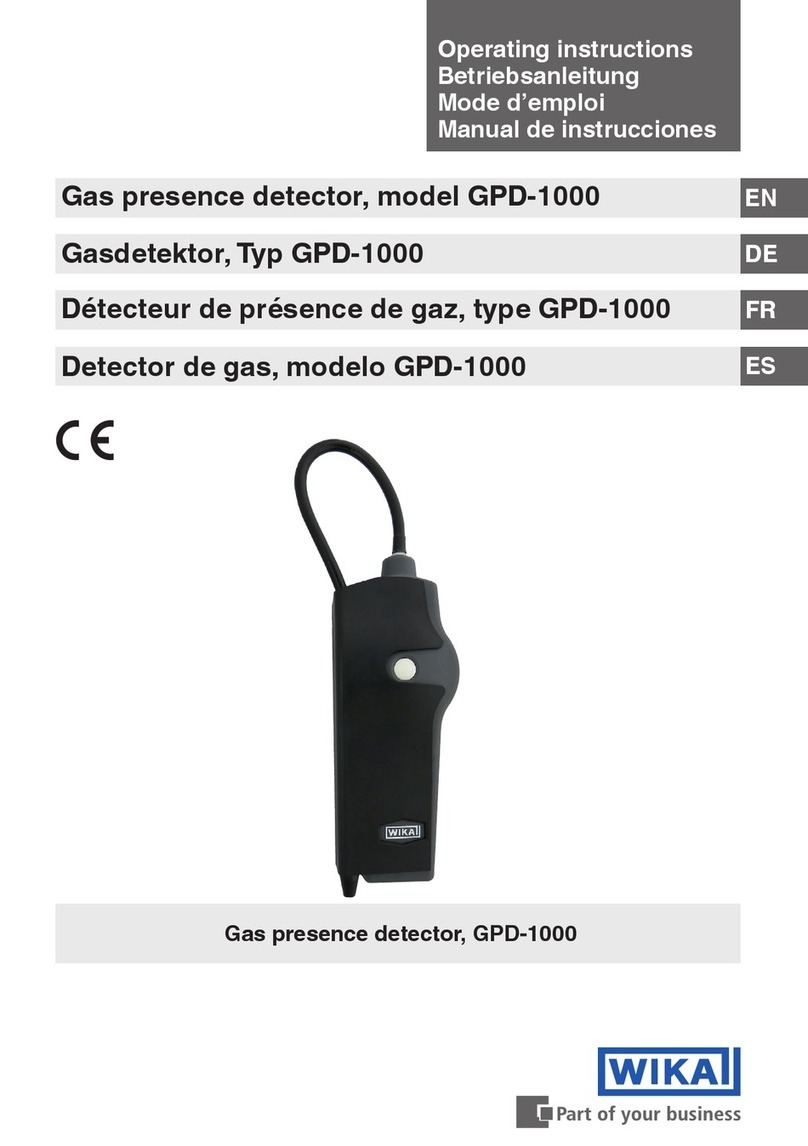
3WIKA operating instructions gas detector, model GIR-10
14008231.01 04/2020 EN/DE/FR/ES
EN
Contents
Contents
1. General information 4
2. Design and function 5
2.1 Overview . . . . . . . . . . . . . . . . . . . . . . . . . . . 5
2.2 Description . . . . . . . . . . . . . . . . . . . . . . . . . . 6
2.3 Scope of delivery . . . . . . . . . . . . . . . . . . . . . . . . 6
3. Safety 7
3.1 Explanation of symbols . . . . . . . . . . . . . . . . . . . . . . 7
3.2 Intended use . . . . . . . . . . . . . . . . . . . . . . . . . . 7
3.3 Improper use. . . . . . . . . . . . . . . . . . . . . . . . . . 8
3.4 Responsibility of the operator . . . . . . . . . . . . . . . . . . . . 8
3.5 Personnel qualification . . . . . . . . . . . . . . . . . . . . . . 9
3.6 Personal protective equipment. . . . . . . . . . . . . . . . . . . . 9
3.7 Handling of insulating gases and gas mixtures . . . . . . . . . . . . . 10
3.8 Valid standards and directives . . . . . . . . . . . . . . . . . . . 11
3.9 Labelling, safety marks . . . . . . . . . . . . . . . . . . . . . 12
4. Transport, packaging and storage 13
4.1 Transport . . . . . . . . . . . . . . . . . . . . . . . . . . 13
4.2 Packaging and storage . . . . . . . . . . . . . . . . . . . . . 13
5. Commissioning, operation 14
5.1 Overview of the controls . . . . . . . . . . . . . . . . . . . . . 14
5.2 Switching on and off . . . . . . . . . . . . . . . . . . . . . . 15
5.3 Charging the battery . . . . . . . . . . . . . . . . . . . . . . 15
5.4 Performing measurements . . . . . . . . . . . . . . . . . . . . 16
5.5 Settings . . . . . . . . . . . . . . . . . . . . . . . . . . 18
5.5.1 Zero point setting . . . . . . . . . . . . . . . . . . . . . . 18
5.5.2 Resetting . . . . . . . . . . . . . . . . . . . . . . . . . 19
5.5.3 Changing displayed units (only for SF₆ gas versions) . . . . . . . . . . 19
5.5.4 Cleaning or replacing the particle filter . . . . . . . . . . . . . . . 20
6. Faults 20
7. Maintenance, cleaning and recalibration 21
7.1 Maintenance . . . . . . . . . . . . . . . . . . . . . . . . . 21
7.2 Cleaning . . . . . . . . . . . . . . . . . . . . . . . . . . 21
7.3 Recalibration. . . . . . . . . . . . . . . . . . . . . . . . . 21
8. Dismounting, return and disposal 23
8.1 Dismounting . . . . . . . . . . . . . . . . . . . . . . . . . 23
8.2 Return . . . . . . . . . . . . . . . . . . . . . . . . . . . 23
8.3 Disposal . . . . . . . . . . . . . . . . . . . . . . . . . . 24
9. Specications 24
9.1 General specifications . . . . . . . . . . . . . . . . . . . . . 24
9.2 Sensor specifications (SF₆ gas version, 0 ... 2,000 ppmv). . . . . . . . . . 25
9.3 Sensor specifications (SF₆ gas version, 0 ... 50 ppmv). . . . . . . . . . . 26
9.4 Sensor specifications (version CO2, 0 ... 500 ppmv (Clean Air / Dry Air)). . . . . 26
10. Accessories 28




















